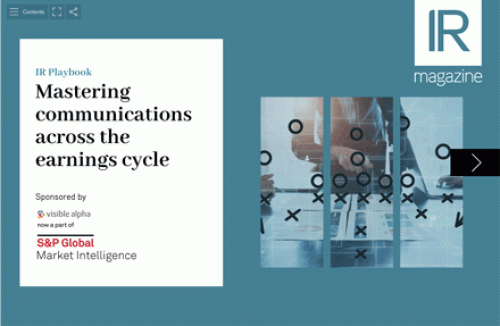The four letters of the EU’s Corporate Sustainability Reporting Directive (CSRD) acronym have been as much a buzzword in 2024 as AI.
Members of the European investment community and those who work for non-EU listed companies that have activities in the EU face a new ‘burden of compliance’: CSRD came into force in 2023 and has applied since the start of this year.
But if in 2023 many independent surveys found that at least six in 10 companies didn’t feel ready for CSRD, the same question asked a year later reveals a very different picture.
Today, a staggering 97 percent of professionals at global companies say they feel ready to report under CSRD by 2025, while 93 percent say they feel prepared to meet reporting requirements by 2026.
This is according to PwC’s recent inaugural Global CSRD Survey, conducted between April and May this year, which gathers data from 547 executives and senior professionals across more than 30 countries and territories.
‘Dig a little deeper, however, and confidence differs greatly, not only among companies but also among topics laid out in the reporting standards,’ notes the report. ‘Respondents report high confidence on topics that are generally included in existing disclosures ([such as] workforce, business conduct and climate change) but are far less confident in their ability to meet reporting requirements on less familiar topics such as biodiversity, circularity, pollution and workers in the value chain.’
Tangible benefits after all
The research also finds that many businesses see multiple benefits as they progress in their CSRD implementation journey.
Better environmental performance was chosen as the main benefit by 57 percent of respondents, followed by improved engagement with both internal and external shareholders (52 percent) and risk-mitigation advantages (51 percent).
Manuel Taverne, head of IR at Bavaria-listed vehicles manufacturer Knaus Tabbert, says his company was an early adopter of CSRD and the firm’s 2023 report was already based on the upcoming regulation and included most of its standards.

‘Our 2023 report was almost in line with the CSRD – and also audited – and the benefit is that we now have the advantage of working on just one report,’ he tells IR Magazine.
He adds that over the last two years his firm had to talk to two different auditor groups at the same company. ‘We had to speak to the non-financial auditor and to the financial one – and they were asking for different sources of data,’ he recalls.
‘For us, CSRD makes the entire auditor process easier because you just have one auditor to talk to before the audit for the signature. In terms of other benefits for the company, we will see what happens going forward.’
In a previous interview with IR Magazine, Giulia Scanferla, senior ESG reporting manager at London-listed British American Tobacco, said CSRD brings ‘bigger opportunities to catalyze this change and make individuals responsible for progress across the organization. I think it’s quite a big step change, but a benefit compared with the past, because other voluntary frameworks didn’t bring the same breadth of change and challenge.’
Obstacles that don’t go away
There are 12 European Sustainability Reporting Standards that underpin CSRD. And as they are conceived with the concept of double-materiality in mind, these standards – or their nuances – may be new for sustainability teams working at approximately 50,000 businesses around the world impacted by the regulation.
That’s why, despite companies being more ready today than they were last year, challenges remain. The PwC report highlights data availability and quality, value-chain complexity and staff capacity as the top three challenges, chosen overall by around six in 10 respondents.
To overcome them, PwC experts advise companies to engage an assurance provider. ‘Given the requirement for assurance under the CSRD, an assurance provider should be involved from an early stage. Most companies appear to have understood this,’ notes the report.
Almost 80 percent of respondents say they have engaged an assurance provider – either their financial auditor (49 percent), a different audit firm (14 percent) or another third-party assurance provider (16 percent).
‘Executive committees or boards are currently involved in CSRD implementation at more than 70 percent of companies and this proportion rises to almost 80 percent for those planning to report in FY 2025,’ the report continues. ‘Although this is encouraging, we urge teams that have not yet engaged with these senior stakeholders to do so as soon as possible, especially at companies aiming to report in 2025.’
Scanferla agrees that involving all stakeholders will make the assessment exercise worthwhile: ‘I think it is vital that all stakeholders are involved and [that they] really understand how [the assessment] is going to be used. Otherwise, it can be very tricky to use double-materiality strategically and correctly from a reporting perspective.’
For a guide on how to get started on CSRD reporting, click here.










